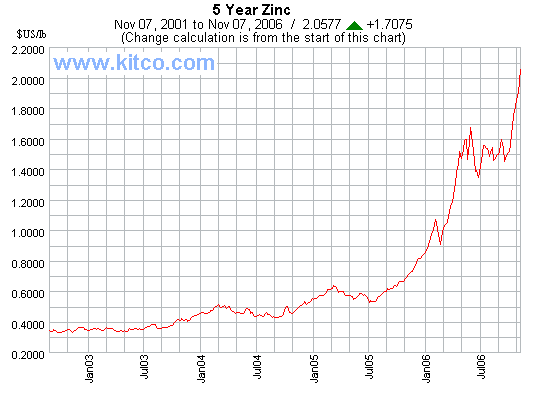 |
|
November 8, 2006 The U.S. Mint has a new television ad campaign. It's a curious mix of piano music and voice-over, more likely to be heard during a pharmaceutical commercial, along with images of a couple tossing coins into a fountain and a boy searching for loose change under some sofa cushions. The most bizarre imagery is that of a man wearing short pants and flip-flops, sitting in a back-yard lawn chair examining a book of state quarters with a magnifying glass while, behind him, a small dog jumps up and down next to a barbeque belching flames two-feet high. A complete set of all 50 state quarters is apparently that engrossing. Here's the narrative, spoken by a woman sounding eerily like the departed Mary Alice Young on the popular ABC prime time soap, Desperate Housewives.
If not for the sound of a pleasant female voice saying the word numismatist, this would hardly have seemed worthy of comment in this space, but when the spooky piano music was combined with the words "Someone you know may be a numismatist", the urge to look closer became overwhelming. It makes you wonder how these spots come to be. Obviously the U.S. Mint has an advertising budget and they hired an ad agency to develop this for them, but how do you get this many awkward sights and sound into just 15 seconds? Pennies from Heaven Regardless of the origin of the curious TV ads, the U.S. Mint has a very curious problem these days in producing the nation's coinage given the rising price of copper, nickel, and zinc. Zinc is shown in the chart below, but the charts for copper and nickel have a similar trajectory - all three metals have quadrupled in price in recent years.
According to this report last summer, with a composition of 97.5 percent zinc and 2.5 percent copper, pennies cost 1.4 cents to produce. With the price of zinc having risen by more than a third since then, production costs must now be close to double the face value. In a strange twist of fate, the booming Asian economy and a near insatiable demand for metals has caused money in the U.S. to become worth more than it was just a few years ago - not as legal tender, but if smelted. If pennies were still made primarily of copper, based on the difference in price between the two metals, a penny would cost close to a nickel. And speaking of nickels, composed of 75 percent nickel and 25 percent copper, this coin has its own budget problems. When the calculation was done in July with the price of nickel at $13 a pound, the value of the metal content alone came out to almost seven cents. If other production costs and the current metal price are factored in, it's closer to a dime. There's a complete set of data for all the nation's coins at another extremely helpful and informative government website - U.S. Mint Coin Specifications. It doesn't make you feel any better about what they're doing to the purchasing power of the nation's money, but the website is well done. You can even buy $50 gold coins there - for $720. Goldfinger Despite the desire of the Founding Fathers that only gold and silver be used to make the nation's money, in order to pay for the Civil War, the practice was abandoned. The legal-tender laws at the time required people to accept the government's bills and notes at face value, regardless of how much the government printed. If you ever see one of those historical inflation charts going back to the 19th century, you'll see a large inflation spike during the Civil War period - it took another century for this idea to become standard operating procedure within the government. Silver was last used in 1969 and it has been many, many decades since gold coins were being exchanged at face value. Twenty years ago, the mint began producing American Eagle gold coins and in an irony that grows with every $100 increase in the price of gold, according to this FAQ at the U.S. Mint, they are still legal tender. You have to wonder what goes through the minds of the people who are sharp enough to even ask the question why a $50 gold piece can be exchanged for $50 at a bank and over $600 at a coin shop. There are some profound implications for anyone inclined to read a little history and do a little math. For some time now, the idea of taking a gold coin to a bank just to see if it would be accepted for deposit has been tossed about here. Now that the answer is known - it is indeed legal tender, and banks should accept it at face value - it still might be worth the trip, just to see what kind of response is elicited from the teller. |
